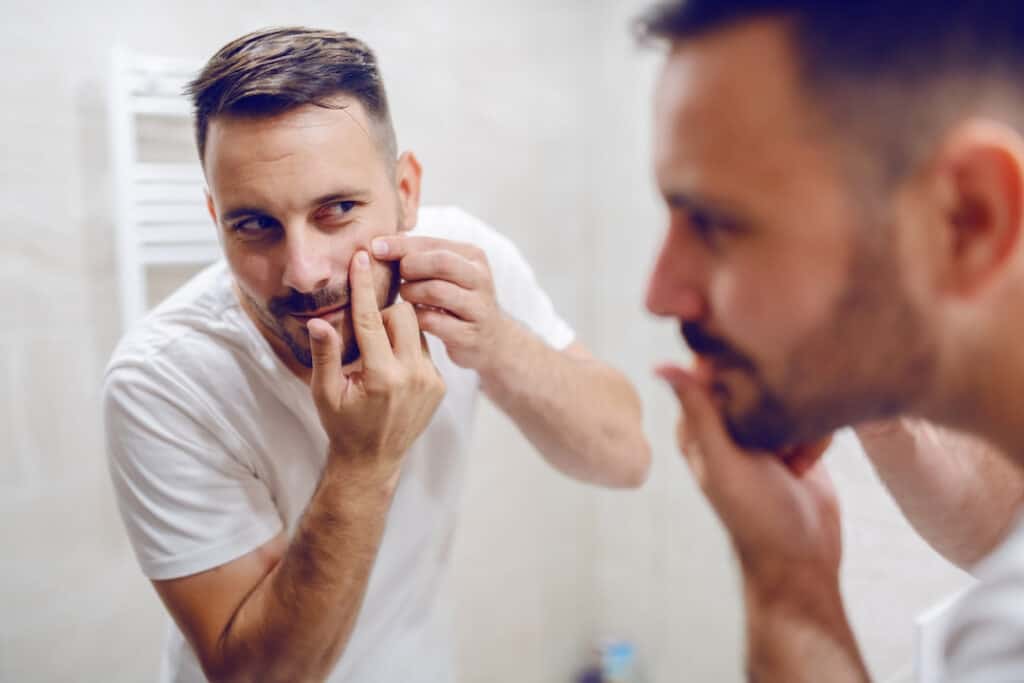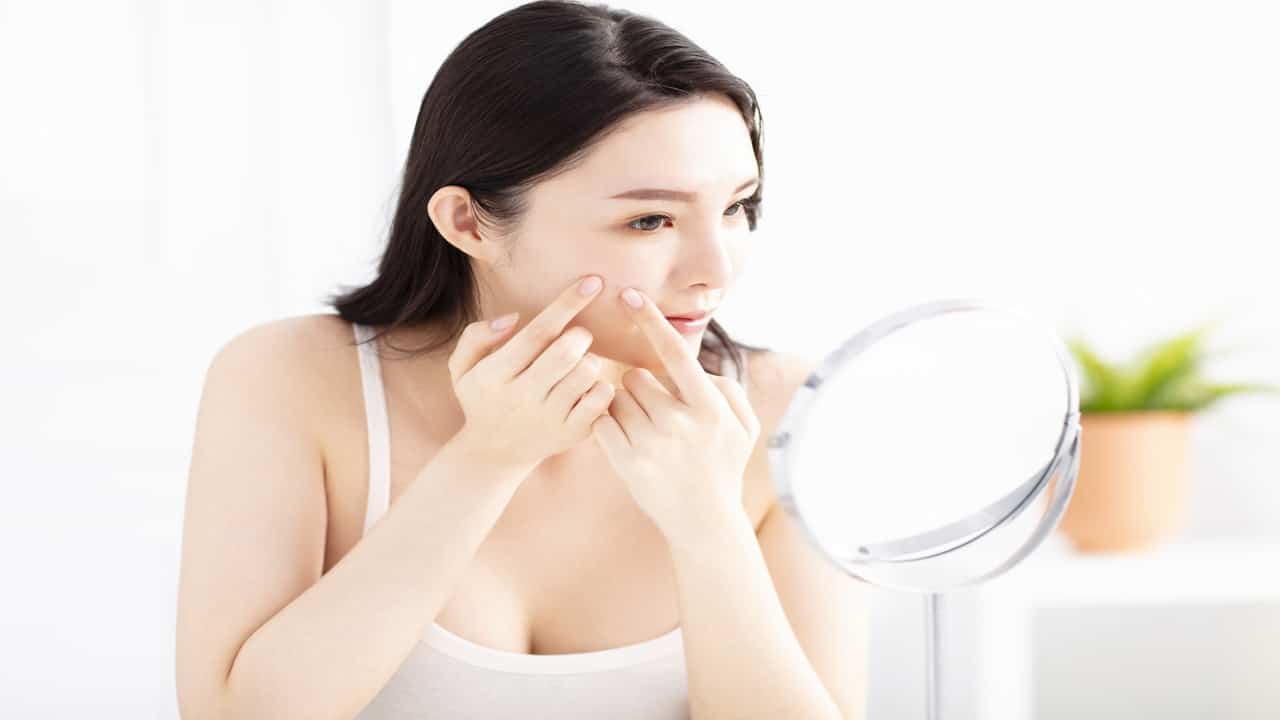Skin picking, also known as dermatillomania and excoriation, is a disorder wherein individuals feel compelled to pick at their skin. They do this to remove an imperfection they perceive on the surface of their body to have perfect skin. The side effects that can come from this compulsive disorder include, but are not limited to, fungal infections, scarring due to the constant picking at wounds, and permanent disfigurement of affected areas.
You can also lose weight due to some stressful situations. These side effects do not come from the perceived initially imperfection being picked on but from the continued compulsive behavior. The individual has an obsessive need to have a flaw-free body.
Hypnosis is an effective treatment option that can reduce or eliminate the bad habits caused by this disorder. It starts with a thorough assessment by a hypnotherapist to determine the underlying causes of the bad habit, followed by creating personalized hypnosis sessions to counter each one.
Hypnosis Downloads
If you’re looking for a way to stop skin picking, then this specific Stop Skin Picking audio from Hypnosis Downloads is perfect.
As you listen to the audio, you’ll relax more and deeply as your frustrations melt away. What happens with hypnosis is that it may help you tackle this frustrating habit by working on your subconscious mind because that’s usually the origin.
Hypnosis may help you get rid of the old bad habits by replacing them with new ones to rejuvenate your skin and keep it emasculate. Hypnosis can help you with so many health issues that we don’t even know where to begin with.
Start working on your recovery today by downloading the audio and starting your journey to being more at peace and keeping your skin healthy.
What Are The Symptoms Of Skin Picking?
People with excoriation often feel an increasing feeling of tension immediately before actually beginning to pick. The pressure will usually build until they can’t stand it, and then the picking will temporarily relieve this tension. Unfortunately, after the picking is complete, the individual will often realize that the perceived flaw that caused them to begin picking has not been removed or fixed. It leads into a cycle of repeated picking at the same area or others in an attempt to “fix” what they perceive as flaws.
Some people with compulsive skin picking disorder will often eat the removed pieces of skin, pimples, scabs, nails, and other debris. They may also try to pick at or mask blemishes using cosmetics or even hide their habit from others by wearing long sleeves and pants in hot weather.

Physical Symptoms of Compulsive Skin Picking
The physical signs and symptoms often associated with this disorder include scabs, sores, nail biting, hair pulling (see trichotillomania hypnosis), scars on the fingers, hands, arms, and other body areas, including legs, face, and neck. These wounds may sometimes become worse if they get infected.
Psychological Symptoms
Individuals with excoriation often describe the anxiety, disgust, or other negative emotions immediately before they pick or play with the skin. They may also indicate that they feel compelled to perform the behavior to reduce stress, pressure, or tension.
Skin picking can follow a negative cycle. Feelings of shame or disgust may follow the urge to pick the skin. The individual may try to resist the urge but eventually succumbs and repeats the behavior. The disorder frequently co-occurs with other conditions, including Obsessive-Compulsive Disorder (OCD), Depression, Anxiety Disorders & Eating Disorders.
What Causes Skin Picking?

There are many theories on the causes of skin picking. Research suggests that there is an underlying biological or neurological cause. Evidence shows that genetics play a role, considering excoriation often runs in families, but it may also result from environmental and psychological factors.
This condition often has its roots in childhood trauma (see also hypnosis for kids) such as bullying or abuse, in the case of many adults who struggle with excoriation today. However, it’s possible to develop the behavior later in life due to other causes, including:
- Anxiety
- Fear
- Boredom
- Bodily distress or tension
- Compulsive behavior
- Depression
- Excessive stress or frustration
- Self-esteem issues
In many cases, several of these factors may come together to cause the disorder to develop. It’s rare for a single element or trigger to be identified as a sole cause.
How Do You Stop Unconscious Skin Picking?
If you or someone you know is struggling with skin picking disorder, it is essential to seek professional help. Proper medication is critical in making progress and overcoming this sometimes debilitating condition.
Research has shown that Cognitive Behavioral Therapy (CBT), family counseling, habit reversal training, and self-help methods alone do not often work for those with a skin picking habit. Unfortunately, skin-picking symptoms often get worse if a person tries to stop without professional help.
Skin picking disorder is a real condition and not a lifestyle choice or a conscious decision made by individuals to harm themselves. It’s often a sign of something deeper psychological issue.
A skin picking habit often needs to be treated as an addiction, and those struggling with it should receive the full support of their family, friends, and insurance providers. Recovery is possible; however, doing so will take time and commitment on your part.
The first step in recovering from skin picking disorder is a thorough assessment by a doctor or mental health professional. You will likely be asked about the symptoms you experience, how much the habits disrupt your life, and what treatments you have tried in the past. The consultation is also an excellent time to mention if skin picking disorder runs in your family, as this may indicate a biological cause for the bad habit.

Can Hypnotherapy Help With Skin Problems?
Hypnotism is an effective way of retraining the brain to reduce or stop skin picking. It works by identifying and then treating the underlying causes that trigger a person to pick their skin. The first step consists of a comprehensive assessment during which a clinician will develop a list of potential triggers and create an individualized treatment plan. The process may include one or more of the following:
- Identifying and eliminating self-destructive thoughts such as “I am ugly.”
- Treating any pre-existing mental health disorders such as depression, anxiety, post-traumatic stress disorder (PTSD), or obsessive-compulsive disorder (OCD) which can exacerbate the behavior.
- Using other stress management techniques such a meditation and other forms of deep relaxation to reduce tension and anxiety.
After completing the assessment, a therapist will use hypnosis to create customized trance sessions, which the individual listens to at home or in session. The hypnotherapist takes the person through an imaginary landscape where they are guided to eliminate the obsessive thoughts which lead to picking. They are also taught how to resist the physical urges that trigger the habit.

The individual listens to the hypnosis session for a week and encounters five different scenes. Each scene deals with a specific trigger and creates an imaginary scenario where most people regain control over the disorder. The last stage is called “the magic moment” because when the listener encounters this final scene, they will no longer have any desire to pick their skin.
It’s worth noting that hypnosis should be a last resort treatment after trying non-hypnotic methods such as anti-nervous medications and counseling. It’s not recommended for individuals with pre-existing mental health disorders like schizophrenia, bipolar disorder, or severe clinical depression. The results of the treatment are typically lasting unless the individual suffers another traumatic event that triggers the desire to pick.
How Do You Break The Cycle Of Skin Picking?

The next step in treating the bad habits is for you to learn how to deal with triggers. Triggers are events or situations that lead directly to your compulsive behavior. You may need to do some research or talking with friends and family members to figure out the most common triggers. Once you know what they are, you can develop strategies to avoid them or plan on how to deal with situations that usually lead to picking.
A doctor may also recommend keeping a diary to identify times when your skin-picking episodes are most likely to happen. You can then attempt to break the cycle by going somewhere else, avoiding certain people or distractions.
It’s important to note that this will not be easy initially, but with practice, you’ll get better at avoiding triggers and break the habits.
Hypnotherapy For Dermatillomania/ Excoriation (Skin Picking) Disorder
One of the best ways to break the cycle is with hypnosis. Clinical studies have shown the technique reduces the urge and need to pick, ultimately helping you break destructive habits for good.
Hypnosis can also help you develop a new mindset that encourages positive behaviors and reduces bad habit compulsions. In your session(s), you’ll be taught self-hypnosis to help you counter each compulsive behavior that causes skin picking or dermatillomania.
Many believe that the “skin picking trance” is just an excuse to dismiss bad behavior. However, hypnotherapy for Skin Picking Disorder is not about denying responsibility – it’s about changing your mind frame. Instead of looking at the urge to pick as something you can’t contain, you’ll learn to embrace it and manage the impulses.
By learning how to keep your mind relaxed after each session with a hypnotherapist, you can find peace without picking or harming yourself in any way. Over time, what was once an obsession will have no power over you.

Conclusion
Skin picking is not a condition that will go away on its own. Despite looking visibly disturbing, it can cause significant damage to the skin if self-inflicted wounds are not treated promptly. Because of this, other treatments should be considered as an option.
However, you should consult with your doctor before beginning any self-hypnosis. The process is a powerful way to identify and treat the underlying causes of this disorder. It may be considered a last resort treatment, but it has been shown to improve the quality of your everyday life in many cases significantly.

